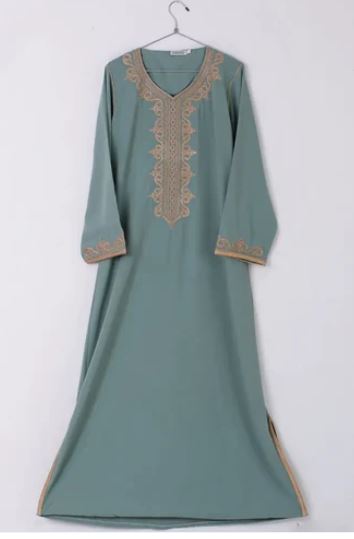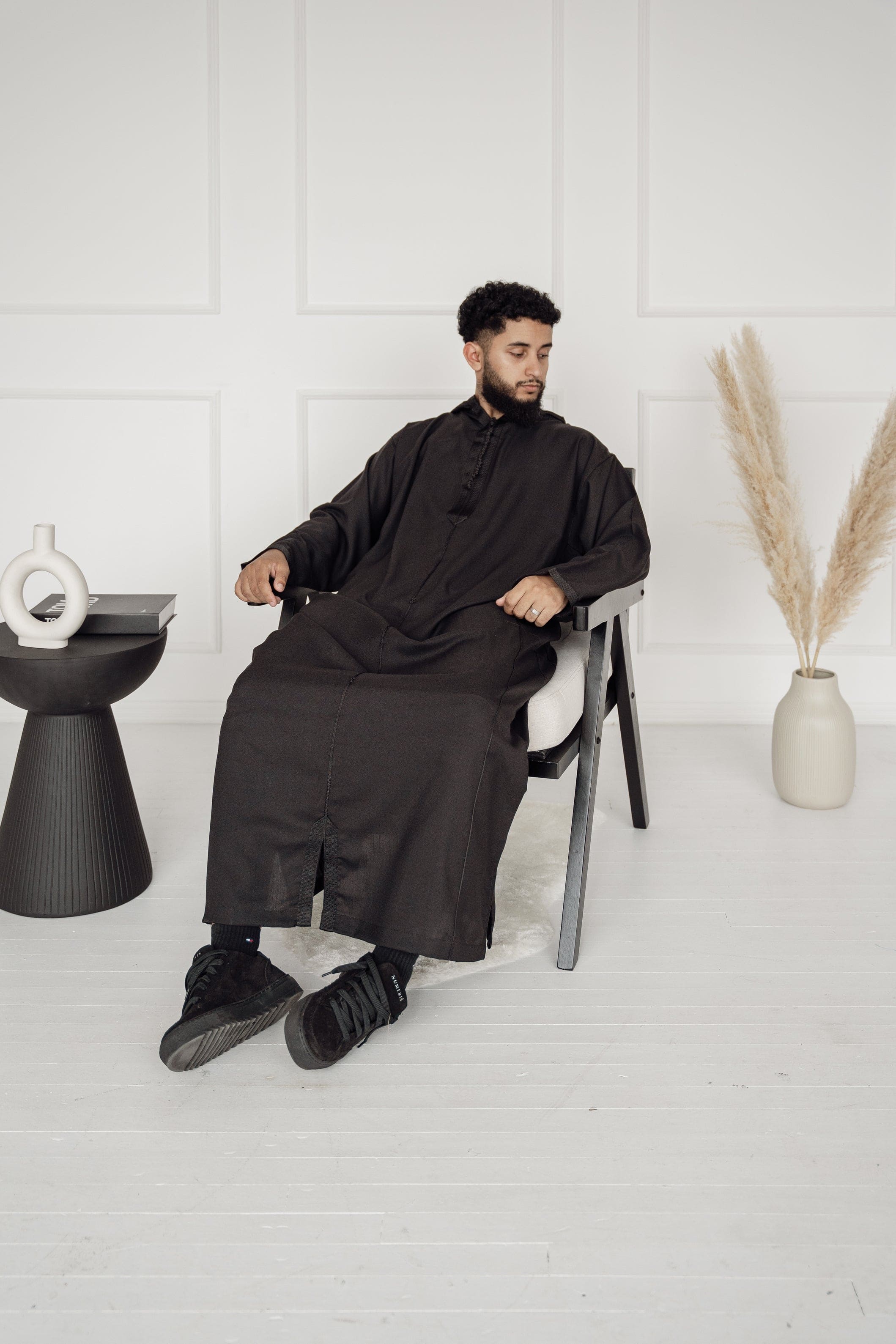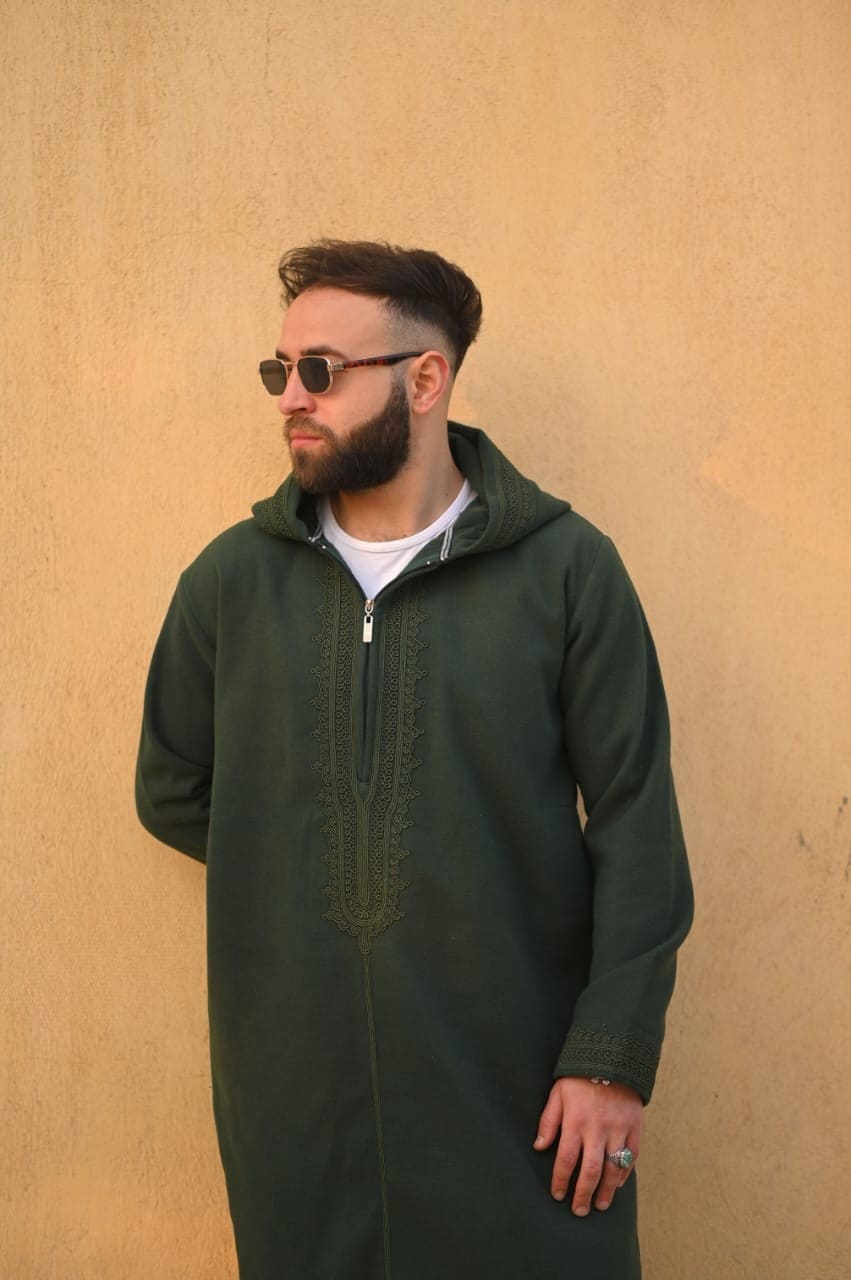Thinking about and doing in-depth research regarding what is a kaftan and its importance among Muslims can be understood from the facts that back in the 12th century, this special attire was only worn by the royalties and Sultans. Their mindsets revolved around the notion that kaftans symbolize dominant status and power, which must be exhibited remarkably enough to leave a permanent mark in this world.
For centuries, kaftan dress has remained a symbol of eminence in several cultures worldwide, particularly in Muslim regions. It is a modest form of Islamic clothing initially worn by Arabic men in the Middle East.
Many times, you must have found yourself perplexed over what a kaftan is and how its modern variants differ from the traditional ones. Since ancient times, the world has been dazzled with the royalty, style, and elegance of Arabic culture, and it has never failed to impress anyone. The radical transformations in Arab cultural attires possess that captivating essence that doesn't leave you alone, particularly while deciding what to wear in the upcoming festival.
Historical Perspective of Kaftan
Before delving into the modernity of what is a kaftan, it is crucial to go through its historical perspectives to deepen the influence of royalty. At the same time, you continue to slay in this outfit.
The exact origins of a kaftan are pretty debatable. However, strong evidence suggests that this robe (or tunic) variant emerged in ancient Mesopotamia – a historical region of West Africa that today occupies modern Iraq along with present-day parts in Iran, Kuwait, Turkey, and Syria.
Typically, kaftans are styled as long robes with varied lengths – sometimes reaching the calves, just under the knee, or the entire body length from shoulders to ankles. Its front is usually open with tight or loose sleeves with a cut and a modest neckline in closed-front styles. However, the neckline aligns with the front-open style proportionately. The overall appearance of kaftans is enhanced by adding either a sash or belt embedded with different types of detailed embellishments.
Brief Initiation: What is a Kaftan?
Crafted by hand, traditional kaftans comprise an array of illuminating colors of rich fabrics made of silk, chiffon, wool, cotton, or cashmere. The classic authenticity of traditional kaftans of African and Middle Eastern regions demonstrates a long and luxurious appearance which are free-flowing with stylish and tremendous flares. Over time, these kaftans have undergone various modifications, which are becoming limitless worldwide.
Along with embroidered kaftans, printed kaftans are also in demand. They are becoming popular among women to be worn for both casual and formal celebrations – depending on the versatility and comfort it holds. On the other hand, men of Arabic and nearby regions tend to wear long robes, which sometimes resemble kaftans but are plain. The fabric choice is typically cotton or wool with monochromatic tones, such as white, brown, and blue shades. Buy the best one for yourself.
Today's Exquisite Kaftans
The magnificent uniqueness of kaftans is designed to be worn on any occasion, from casual meetups to birthday parties, beach days out with friends, to stardom festivals. Its timelessness is no longer restricted to being a modest dress for Arabic women only.
Whether traditional, trendy, or modern, kaftans are adorned with detailed embroidery of various types, splendid patterns, and striking embellishments. Such dresses are true representatives of amalgamated blends of classic and contemporary designs.



